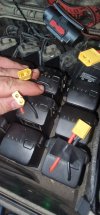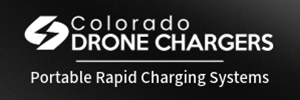You are using an out of date browser. It may not display this or other websites correctly.
You should upgrade or use an alternative browser.
You should upgrade or use an alternative browser.
USB port on Mavic 3 Powered?
- Thread starter username_required
- Start date
- Joined
- Oct 12, 2016
- Messages
- 30,346
- Reactions
- 34,273
- Location
- Harrisburg, PA (US)
- Site
- mavichelp.com
Yes, the USB port on the Mavic 3 is powered. You can use it to charge devices or to power accessories such as a USB light or a USB fan.
Keep in mind that the USB port is intended for charging devices or powering low-power accessories, and it may not be able to support devices that require a high power draw. It is also important to use only compatible and properly rated devices with the USB port to avoid damaging the Mavic 3 or the connected device.
Keep in mind that the USB port is intended for charging devices or powering low-power accessories, and it may not be able to support devices that require a high power draw. It is also important to use only compatible and properly rated devices with the USB port to avoid damaging the Mavic 3 or the connected device.
Can that port also be used to add a power brick to the drone for additional flight time, assuming you also found a way to safely mount it?Yes, the USB port on the Mavic 3 is powered. You can use it to charge devices or to power accessories such as a USB light or a USB fan.
Keep in mind that the USB port is intended for charging devices or powering low-power accessories, and it may not be able to support devices that require a high power draw. It is also important to use only compatible and properly rated devices with the USB port to avoid damaging the Mavic 3 or the connected device.
- Joined
- Oct 12, 2016
- Messages
- 30,346
- Reactions
- 34,273
- Location
- Harrisburg, PA (US)
- Site
- mavichelp.com
That port can be used to charge the battery, so I guess it would be technically possible. Safely though? Not sure.Can that port also be used to add a power brick to the drone for additional flight time
- Joined
- Oct 17, 2020
- Messages
- 1,215
- Reactions
- 897
- Age
- 44
- Location
- Grand Rapids, MI
- Site
- karlblessing.com
Port can charge the battery yes, but I highly doubt it would allow charging while in flight. Plus the battery charge is much slower than the battery discharge, the drone will end the flight when the internal battery reaches near zero. It's not going to run direct off the USB port.
Your best bet is to just use the extended battery which already gives 40+ minutes flight time safely.
Your best bet is to just use the extended battery which already gives 40+ minutes flight time safely.
If it will allow any charging of the battery during flight, which was my question, it could extend the flight time, assuming the added mAH exceed the loss in flight time from the extra weight of the charging brick. From past battery mods, doubling the stock mAH with external batteries increased flight time by roughly 50%. Even if the charging was at 50% of the rate of discharge during flight, it could potentially add 25% to the flight time. You can never have enough flight time at your destination, and returning to the launch site, landing and swapping batteries, and returning to the destination doesn't solve that problem very effectively. Adding even 5 minutes to the total flight time could save 4 additional trips, if one only had 1 minute at the destination on one battery.Port can charge the battery yes, but I highly doubt it would allow charging while in flight. Plus the battery charge is much slower than the battery discharge, the drone will end the flight when the internal battery reaches near zero. It's not going to run direct off the USB port.
Your best bet is to just use the extended battery which already gives 40+ minutes flight time safely.
Certainly worth testing.
- Joined
- Oct 17, 2020
- Messages
- 1,215
- Reactions
- 897
- Age
- 44
- Location
- Grand Rapids, MI
- Site
- karlblessing.com
You also have to consider the loss of time from adding the additional payload weight, a battery that is going to provide a good flow is typically also going to be heavy. Improvement might be negliable.If it will allow any charging of the battery during flight, which was my question, it could extend the flight time, assuming the added mAH exceed the loss in flight time from the extra weight of the charging brick. From past battery mods, doubling the stock mAH with external batteries increased flight time by roughly 50%. Even if the charging was at 50% of the rate of discharge during flight, it could potentially add 25% to the flight time. You can never have enough flight time at your destination, and returning to the launch site, landing and swapping batteries, and returning to the destination doesn't solve that problem very effectively. Adding even 5 minutes to the total flight time could save 4 additional trips, if one only had 1 minute at the destination on one battery.
Certainly worth testing.
But I doubt it would charge during flight , plus I don't know how it might impact the battery performance when doing larger discharges (higher prop speeds, maneuvers,etc) and if it'll do anything temperature wise trying to charge the cells at the same time.
Already considered, as I alluded to, from adding external batteries in parallel in the past on the P4 and P3P: "doubling the stock mAH with external batteries increased flight time by roughly 50%."You also have to consider the loss of time from adding the additional payload weight, a battery that is going to provide a good flow is typically also going to be heavy. Improvement might be negliable.
But I doubt it would charge during flight , plus I don't know how it might impact the battery performance when doing larger discharges (higher prop speeds, maneuvers,etc) and if it'll do anything temperature wise trying to charge the cells at the same time.
Rather than doubt or speculation, let's first confirm it works. It may, in fact, be a way of adding external batteries.
I have the same opinion as karlblessing. The temperature will rise (even in flight where there is wind flow, which can cool the battery). I think too, that the drone doesn't allow to charge batttery during the flight, but you can test it, it would be nice to find out if this would work or not. Please let us know.
I experiencing a similar heating issue on an iPhone connected to a charging brick, while using it continuously for video. It overheated the iPhone to where the display went black, and would not record until it cooled down.I have the same opinion as karlblessing. The temperature will rise (even in flight where there is wind flow, which can cool the battery). I think too, that the drone doesn't allow to charge batttery during the flight, but you can test it, it would be nice to find out if this would work or not. Please let us know.
So you both make a good point about the continual charging generating additional heat to an already hot battery during flight. It's quite different than two batteries in parallel, where neither is charging the other, in the traditional external battery addition.
Still haven't tried it, but I'm less enthusiastic about it now, even if it is possible, which seems even less likely now. DJI is pretty good about anticipating these sorts of adverse events and prohibiting them.
Still, good to know it can be used powering external devices during flight!
audi2000
Active Member
Is it possible to power RID from usb connector?Yes, the USB port on the Mavic 3 is powered. You can use it to charge devices or to power accessories such as a USB light or a USB fan.
Keep in mind that the USB port is intended for charging devices or powering low-power accessories, and it may not be able to support devices that require a high power draw. It is also important to use only compatible and properly rated devices with the USB port to avoid damaging the Mavic 3 or the connected device.
DesecratedClown
Member
This has been extensively tested in Ukraine with "double batteries" and the consensus is that it adds roughly 30% flight time, due to extra payload weight and other reasons.Already considered, as I alluded to, from adding external batteries in parallel in the past on the P4 and P3P: "doubling the stock mAH with external batteries increased flight time by roughly 50%."
Rather than doubt or speculation, let's first confirm it works. It may, in fact, be a way of adding external batteries.
I personally do not use double batteries at all, and either fly a dry drone with a normal battery, or bombload as my only payload. Using a dual dropkit with a 2 VOG17 bomb magazine, or 2 40x53 mm bombs. Or on rare occasions because it blocks the sensor, I fly with a single thermite grenade. (The single dropkit has no internal battery and is actually powered by the onboard USB port)
I do use the double battery modification on some batteries, but that is only to power the retranslator when I carry a retranslator for supporting FPV flight. I do this because the retranslator has a low powerdraw, and I only need to hang it in the air, and I don't want the extra weight of a separate battery for the retran.
This is way beyond my paygrade! LOL!This has been extensively tested in Ukraine with "double batteries" and the consensus is that it adds roughly 30% flight time, due to extra payload weight and other reasons.
I personally do not use double batteries at all, and either fly a dry drone with a normal battery, or bombload as my only payload. Using a dual dropkit with a 2 VOG17 bomb magazine, or 2 40x53 mm bombs. Or on rare occasions because it blocks the sensor, I fly with a single thermite grenade. (The single dropkit has no internal battery and is actually powered by the onboard USB port)
I do use the double battery modification on some batteries, but that is only to power the retranslator when I carry a retranslator for supporting FPV flight. I do this because the retranslator has a low powerdraw, and I only need to hang it in the air, and I don't want the extra weight of a separate battery for the retran.
However, can you confirm that the USB port can be used to add external batteries to the stock battery without modifying the battery connection inside to port out external battery connectors?
I'm sure the 30% figure is realistic for so called "double batteries" but my 50% increase was based upon actually completely doubling the stock battery mAh and using two external batteries of the lightest weight available on the Phantom 3 Pro, splitting the matching of the internal wattage between them and flying in the original P/Normal mode. Perhaps the additional advanced circuitry in the Mavic 3 consumes more power than the original Phantom 3 Pro. Seems probable. Especially if flown in Sport mode.
In any event, a 30% increase in flight time for your country’s use is significant for a readily available consumer drone costing less than $2,000 with modifications. I have read elsewhere that over 10,000 Mavic 3's have been needed every month. Good luck!
DesecratedClown
Member
This is way beyond my paygrade! LOL!
However, can you confirm that the USB port can be used to add external batteries to the stock battery without modifying the battery connection inside to port out external battery connectors?
I'm sure the 30% figure is realistic for so called "double batteries" but my 50% increase was based upon actually completely doubling the stock battery mAh and using two external batteries of the lightest weight available on the Phantom 3 Pro, splitting the matching of the internal wattage between them and flying in the original P/Normal mode. Perhaps the additional advanced circuitry in the Mavic 3 consumes more power than the original Phantom 3 Pro. Seems probable. Especially if flown in Sport mode.
In any event, a 30% increase in flight time for your country’s use is significant for a readily available consumer drone costing less than $2,000 with modifications. I have read elsewhere that over 10,000 Mavic 3's have been needed every month. Good luck!

That's a negative Ghost Rider, the pattern is full.
The USB port can not fill the batteries fast enough to give you a boost.
I'm actually very unsure it even accepts decent charge while flying.
This is the only solution I know that works, regardless of firmware, circumstances or anything else, to increase battery time. You then attach the second battery by velcro, tape or 3D printed bulllshit on top.
There just came out a second solution, which is making your main battery modified like this, and then using one of these on top of the drone:

DesecratedClown
Member
Also, where did you get less than 2000 from? We mainly use Enterprise series. Thermal for night, regular for day.This is way beyond my paygrade! LOL!
However, can you confirm that the USB port can be used to add external batteries to the stock battery without modifying the battery connection inside to port out external battery connectors?
I'm sure the 30% figure is realistic for so called "double batteries" but my 50% increase was based upon actually completely doubling the stock battery mAh and using two external batteries of the lightest weight available on the Phantom 3 Pro, splitting the matching of the internal wattage between them and flying in the original P/Normal mode. Perhaps the additional advanced circuitry in the Mavic 3 consumes more power than the original Phantom 3 Pro. Seems probable. Especially if flown in Sport mode.
In any event, a 30% increase in flight time for your country’s use is significant for a readily available consumer drone costing less than $2,000 with modifications. I have read elsewhere that over 10,000 Mavic 3's have been needed every month. Good luck!
Similar threads
- Replies
- 14
- Views
- 3K
- Replies
- 2
- Views
- 2K
- Replies
- 0
- Views
- 563
DJI Drone Deals
New Threads
-
-
Avatar: Fire and Ash Drone Light Show.
- Started by The Droning Company
- Replies: 0
-
Globalstar and Skydio Trial Validates D2D for Drones.
- Started by The Droning Company
- Replies: 0
-
-
Northrop Grumman AION Tackles Drone Threats.
- Started by The Droning Company
- Replies: 0
Members online
Total: 4,916 (members: 8, guests: 4,908)










